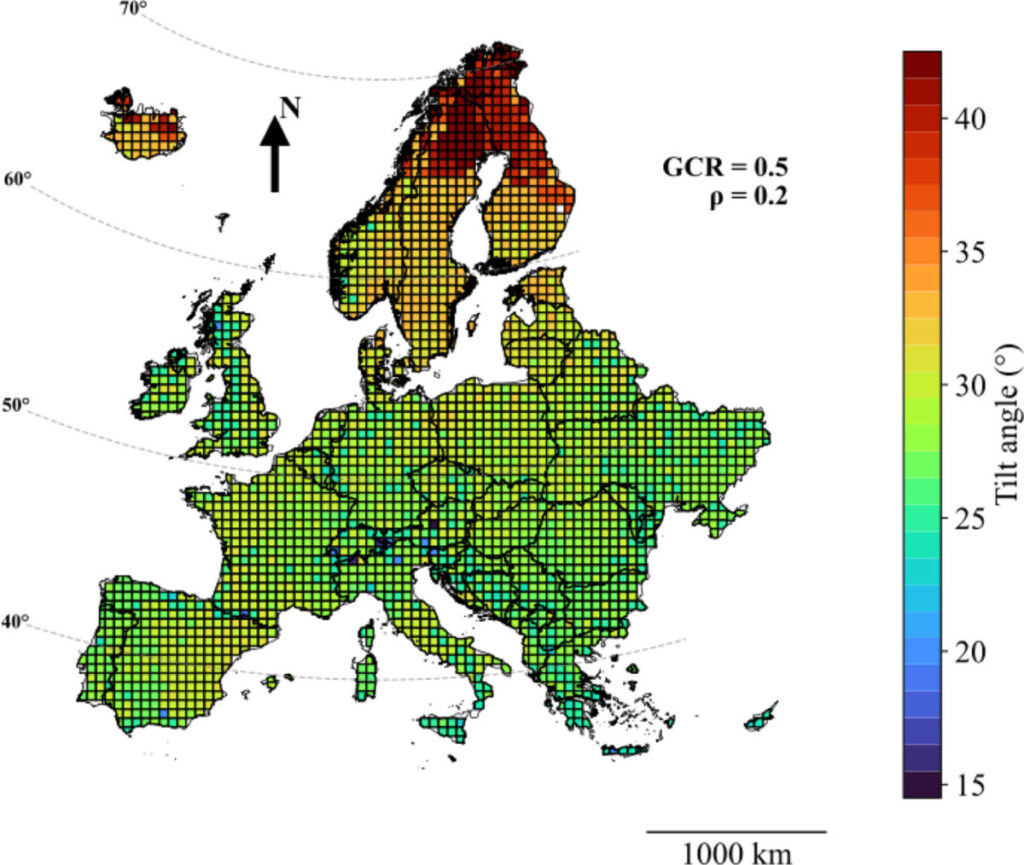An international research team has created a new model that finds the best tilt corner for bifacial PV plants in the south throughout Europe. The scientists also considered the Alpine area to investigate the impact of Bergen on optimum tilting corners.
A team of researchers from France and Italy has developed a tool for optimizing tilting angles in bifacial PV energy plants throughout Europe.
They have made the tool available for free on one Web -based platformSaying that it could be very valuable for local authorities, developers and decision makers when assessing the feasibility of installing bifacial solar systems in their regions.
“Our approach takes into account both self -shadowing of multiple rows and the potential distant obstacles caused by the surrounding terrain,” said the corresponding author Professor Apolline Ferry PV -Magazine. “A second novelty is the analysis of the impact of topography. Bifacial PV systems can in particular benefit from mountainous environments, as a result of improved soil-reverently radiation through complex terrain and highly ground Albedo during snow-covered periods. That is why it is understanding how mountainous terrain affects the energy product.”
The new model assumes on the south of bifacial PV plants. It divides Europe into 2,382 points and for each point it uses a typical meteorological annual file with a temporary resolution per hour. These files include parameters, direct normal irradiation (DNI) and diffuse horizontal radiation (DHI). They are used for the Perez All-Weather Model (AWM), which calculates how the radiation spreads across the Sky umbrella organization.
“A cumulative air radiation is built for every location and an iterative search for the best tilt corner is carried out to maximize the annual energy branch (on both front and back surfaces, taking into account direct, diffuse and reflected energy) from modules-oriented modules, with both ground Albedo and PV row-off.”
The analysis showed that latitude is the primary influencing factor for optimum tilting angles, with average values of 36 ° for Finland, 29 ° for France, 27 ° for Italy and 26 ° for Greece, when the soil ratio (GCR) is 0.5 and the Albedo is 0.2. Results have also shown that GCR is also a significant parameter: in Europe, optimum tilt corners are 25 ° to 65 ° when the GCR is set at 0.05, but 15 ° to 42 ° for a GCR value of 0.5.
To better understand mountainous terrain, the team used a resolution of 5 km by 5 km and the French Alps analyzed. “As demonstrated by a more refined analysis of the French Alps, the correlation between tilt angle and sky view index (SVI) is significant. In particular, higher SVI values lead to a reduction in the optimal tilt angle, making an improved collection of solar radiation from the non -culmored heaven,” they found.
“Although we expected terrain to have an impact on optimum tilting corners, we were surprised by the size of the difference in optimum tilting angles between mountainous and lowland areas on the same latitude, as well as due to the high variability in mountainous environments,” concluded Ferry.
Their findings were presented in “Optimal tilting angles for bifacial photovoltaic plants throughout Europe based on cumulative air and typical meteorological annual data“Published in Solar energy. The research team consisted of academics from French University Savoie Mont-Blanc and the Italian University of Genoa.
This content is protected by copyright and may not be reused. If you want to work with us and reuse part of our content, please contact: editors@pv-magazine.com.

